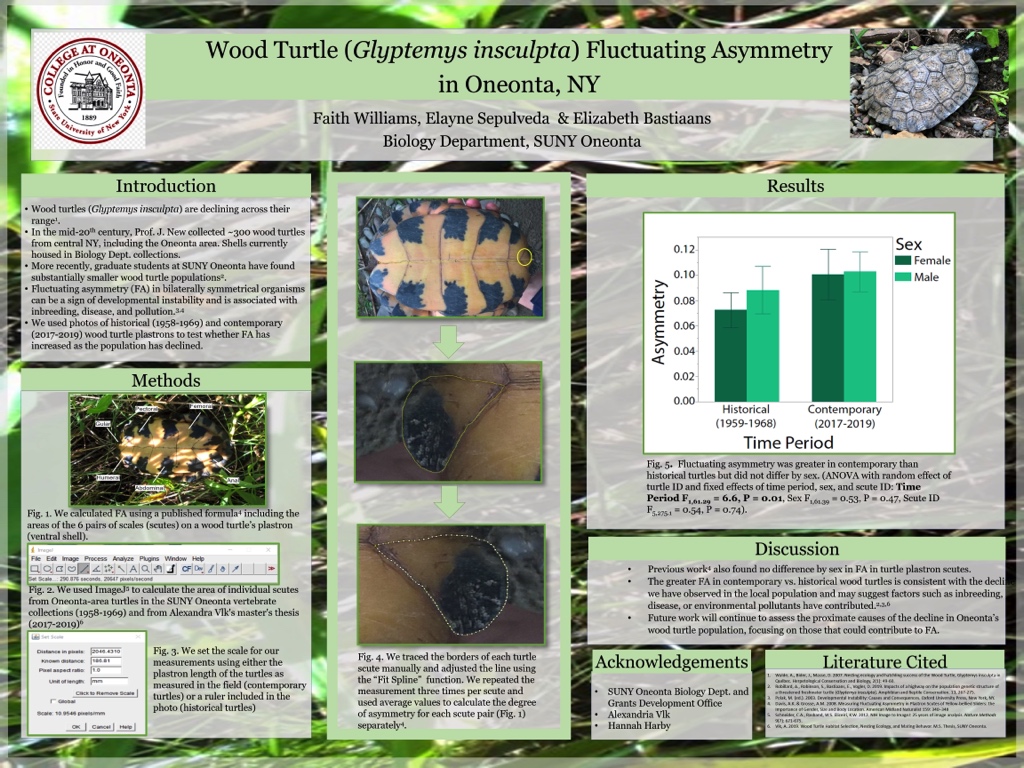Fluctuating Asymmetry in Wood Turtles (Glyptemys insculpta) by Sex, Time Period and Scute ID
Fluctuating Asymmetry in Wood Turtles (Glyptemys insculpta) by Sex, Time Period and Scute ID
Wood Turtles (Glyptemy insculpta) are an endangered freshwater turtle native to northeastern North America. They occur near Oneonta, NY, but their population is declining. SUNY Oneonta is host to a collection of nearly 300 wood turtle specimens collected in the 1960s and 1970s. To help determine the causes of the local population's decline, we compared digital photos of historical Wood Turtle shells photos to digital photos of contemporary Wood Turtle shells. Fluctuating asymmetry is an indicator of developmental instability and higher rates of fluctuating asymmetry are associated with environmental stressors. These environmental stressors may contribute to the Wood Turtle population decline. We measured fluctuating asymmetry for each turtle's paired scutes (scales). We assessed the effect of scute ID, sex, time period and body size on fluctuating asymmetry. We predict higher rates of fluctuating asymmetry in contemporary Wood Turtles than historical Wood Turtles. We also predict differences in fluctuating asymmetry by scute ID, with a tendency towards bigger scutes having larger fluctuating asymmetry values.
Designation: Sustainability-related
 CLOSE SIDEBAR
CLOSE SIDEBAR
